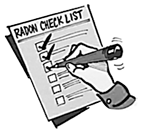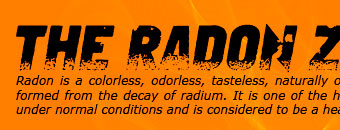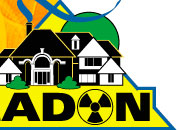Radon testing checklist
For reliable test results, follow this Radon Testing Checklist carefully. Testing for radon is not complicated. Improper testing may yield inaccurate results and require another test. Disturbing or interfering with the test device, or with closed-house conditions*, may invalidate the test results and is illegal in some states. If the seller or qualified tester cannot confirm that all items have been completed, take another test.

1. Before Conducting a Radon Test:
Notify the occupants of the importance of proper testing conditions and give them written instructions.
•Conduct the radon test for a minimum of 48 hours; some test devices have a minimum exposure time greater than 48 hours.
• When doing a short-term test ranging from 2-4 days, it is important to maintain closed-house conditions for at least 12 hours before the beginning of the test and during the entire test period.
• When doing a short-term test ranging from 4-7 days, EPA recommends that closed-house conditions be maintained.
• When you hire someone to do the test, hire only a qualified individual.
• The test should include method(s) to prevent or detect interference with testing conditions or with the testing device itself.
• If the house has an active radon-reduction system, make sure the vent fan is operating properly. If the fan is not operating properly, have it (or ask to have it) repaired and then test.
2. During a Radon Test:
• Maintain closed-house conditions during the entire duration of a short-term test, especially for tests shorter than one week in length.
• Operate the home’s heating and cooling systems normally during the test. For tests lasting less than one week, operate only air-conditioning units which recirculate interior air.
• Do not disturb the test device at any time during the test.
• If a radon-reduction system is in place, make sure the system is working properly and will be in operation during the entire radon test.
3. After a Radon Test:
• If an elevated radon level is found, fix the home. Contact a qualified radon reduction contractor about lowering the radon level. EPA recommends that you fix the home when the radon level is 4 pCi/L or more.
• Be sure that you or the radon tester can demonstrate or provide information to ensure that the testing conditions were not violated during the testing period, by having a signed no-tamper agreement.
Sometimes short-term tests are less definitive about whether the radon level in the home is at or above 4 pCi/L; particularly when the results are close to 4 pCi/L. For example, if the average of two short-term tests is 4.1 pCi/L, there is about a 50 percent chance that the year-round average is somewhat below, or above, 4 pCi/L.
However, EPA believes that any radon exposure carries some risk; no level of radon is safe. Even radon levels below 4 pCi/L pose some risk. You can reduce your risk of lung cancer by lowering your radon level.
As with other environmental pollutants, there is some uncertainty about the magnitude of radon health risks. However, we know more about radon risks than risks from most other cancer-causing substances. This is because estimates of radon risks are based on data from human studies (underground miners). Additional studies on more typical populations are under way.
Smoking combined with radon is an especially serious health risk. If you smoke or are a former smoker, the presence of radon greatly increases your risk of lung cancer. If you stop smoking now and lower the radon level in your house, you will reduce your lung cancer risk.
*Closed-house conditions means keeping all windows closed, keeping doors closed except for normal entry and exit, and not operating fans or other machines which bring in air from outside. Fans that are part of a radon-reduction system or small exhaust fans operating for only short periods of time may run during the test.



